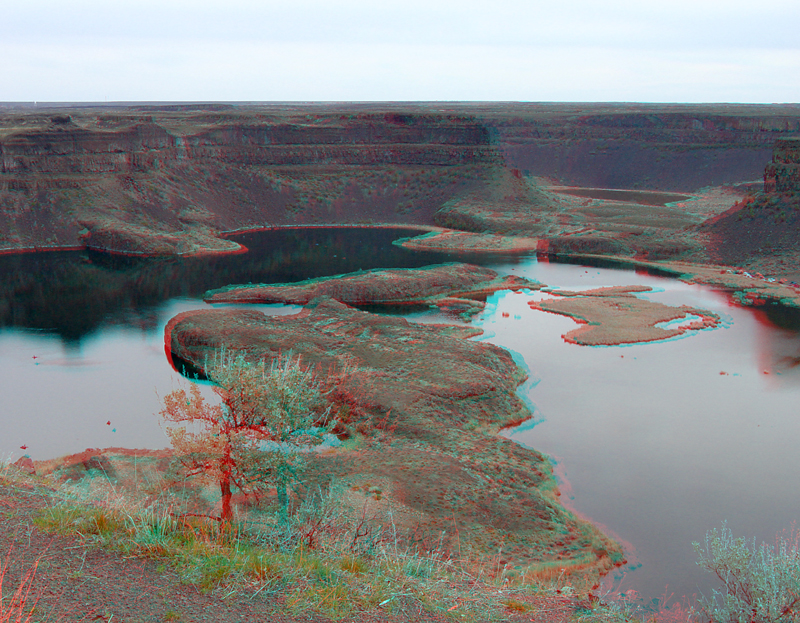
 |
| Dry Falls are the remnants of a great series of waterfalls and plunge pools that formed from the Spokane Flood, a great flood that occurred at the end of the Pleistocene Epoch when the moraine dam of a great glacial lake collapsed. The flood occurred sometime between 18,000 and 12,000 years ago. A great lake that existed in northern Washington and parts of Canada was probably comparable in size and volume to some of the modern Great Lakes. The natural dam probably consisted of loosely consolidated glacial till (rock and soil) that originally accumulated along the advancing front of a great piedmont glacier. The lake possibly completely drained in a matter of days or weeks, causing water to spread across the relatively flat Columbia River plateau before finding passage to the Columbia River. Erosion along hundreds of channels formed the Channeled Scabland - a region crisscrossed by dry channels that are generally barren of soil and still preserve many small pools and basins where the floodwaters carved potholes in the channel beds. The Spokane Flood would have dwarfed any known flood in modern history. Other great glacial break-out floods occurred in many places around the world at the close of the Pleistocene glaciation stages, but the arid conditions in central Washington have helped to preserve landscape features from the flood better than in the more humid climates elsewhere (Baker, 2008, Baker and others, 1987, Bretz, 1969). |